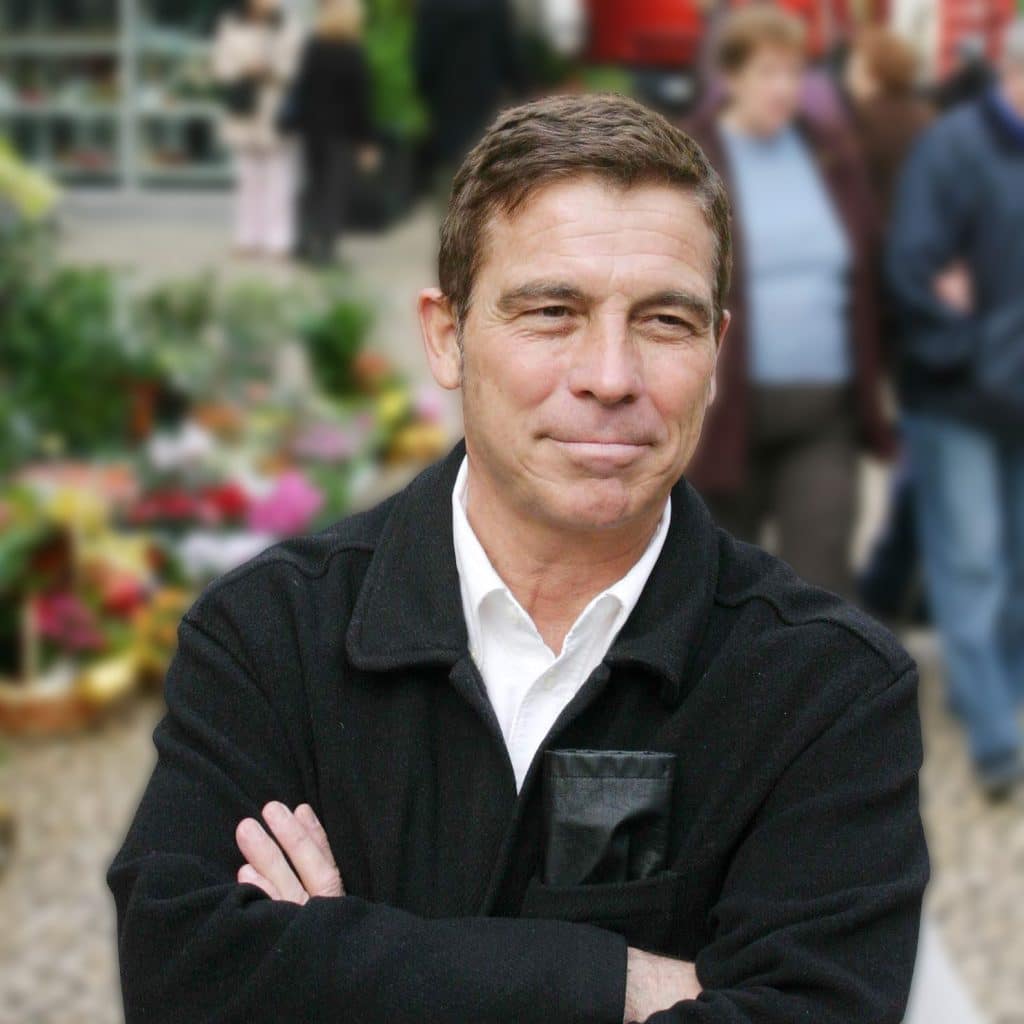Samuel Holleran
University of Melbourne
s.holleran@unimelb.edu.au
Summary
For centuries headstone carving was in the hands of select groups: priestly castes, stonemason guilds, and cemetery operators. Today, stone markets are globalized; religious rites are changing; and cheap, on-demand laser engraving allows for the easy transfer of photographic images to polished stone surfaces. With these changes have come new challenges for those tasked with moderating the visual environment of the cemeteries and other memorial landscapes. This paper explores the changing materiality of memorials and the moderation of controversial imagery by combining insights from the ‘deathcare’ and memorial-design sector taken from anthropological fieldwork, along with a media analysis of several headstone controversies in the US, UK, and Australia. It looks at the actions taken by members of public trusts, stewardship councils, and cemetery personnel to remove or amend images considered inappropriate. It reflects on the changing role of those tasked with moderating memorial content (both public and private) and their interactions with tradespeople, who execute designs, and clients who commission stonework. In so doing, it expands architecture to include adjacent fields that are routinely categorized as ‘craft,’ and it looks at decision-making that defies typical public/private, secular/religious binaries. Lastly, this paper analyzes how memorial moderation relates to a built environment that is increasingly saturated with the photographic in the form of screen-based ‘media facades,’ image-based wraps, and laser-engraved substrates.
Background
Inexpensive laser engraving has brought photographic reproduction into memorial landscapes, changing the look and feel of sites of memory. Up until 2000, most stone memorials made use of sandblasted line art and evocative text. Photo-engraved headstones emerged, primarily in the former Soviet Union and its diaspora communities (Madrigal 2011) and have slowly grown in popularity (Figure 1). Today, they can be found across the world and represent an inexpensive alternative to traditional stone carving.
The substrate for photo-based headstones is black ‘granite’ (often dolerite) finished slabs imported from China, that gleam and absorb light in a way that is not dissimilar from giant smartphone screens. This inverts funerary sculpture traditions from the 19th and early 20th centuries when memorials were seen as art objects, widely photographed and disseminated via postcards (Mills 2015); new graves are vehicles for their own photographic images. While some engravings engage with older forms of vernacular funerary illustration (Thomson 2006) they also render high fidelity reproductions of holiday scenes, motor vehicles, and even web art—elements that seriously challenge the aesthetic grounding of cemetery memorialization.
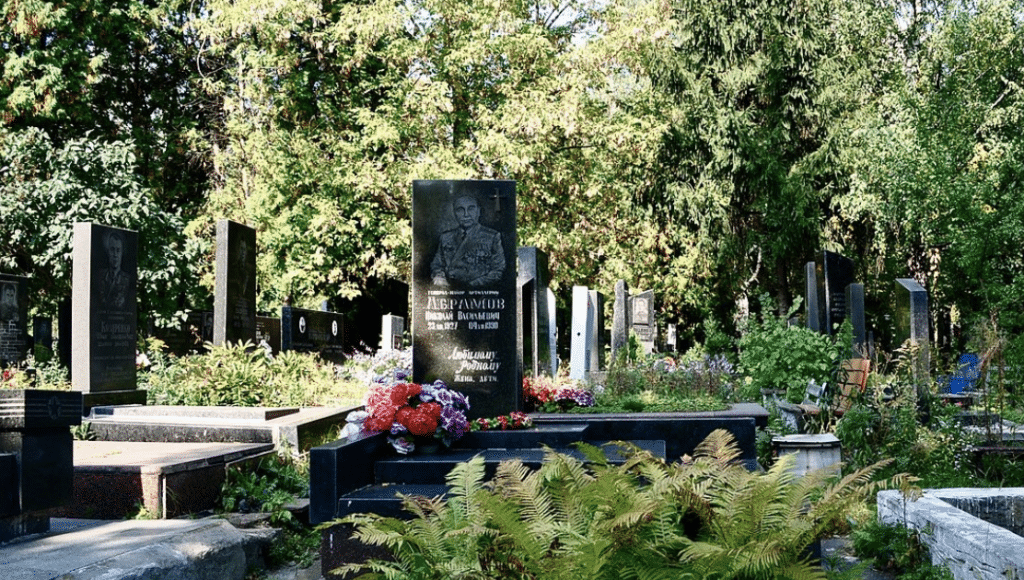
Fig.1. Laser engraved headstones in a Cemetery in Kyiv, Ukraine. Source: Sharon Hahn Darlin, Creative Commons, 2012.
Methods
Research for this paper was primarily conducted in Australia from 2020 to early 2022. During this time, the author met with over 20 representatives from cemetery authorities in several states and participated in activities with ‘Friends of’ groups and local historians. The author also met with built environment professionals, such as architects and landscape architects; and with ‘tradespeople’ including stone carvers, bronze casters, and other memorial-makers at their offices and at two annual meetings for cemetery managers and vendors (Figure 2). In addition to this, the author performed a review of 113 news stories relating controversies of memorial imagery from the last ten years in the U.S., Australia, and the U.K.
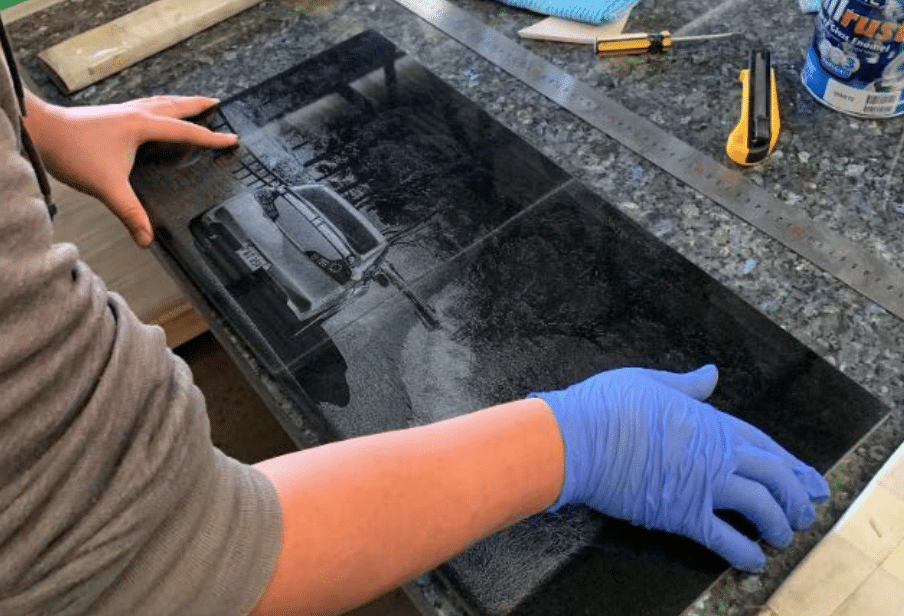
Fig. 2. A technician prepares an engraved insert with an image of a sports car on it. Source: author.
Case-studies
With the Covid pandemic came an increased scrutiny of the deathcare sector, and a desire professed by some informants to move to more ‘green’ interment methods like natural organic reduction (‘human compositing’) and natural burial ‘on country’ (practiced by many Indigenous Australian groups). Funerals, which were limited during lockdowns to 10 mourners, became a flashpoint for community anger. Afterwards, funeral directors and cemetery managers sought out innovations to renew investment in cemeteries in a country where 71% of bodies are cremated, focusing on ways to make burials stand out for future visitors. They began to offer a plethora of new ‘products’ for funerary art and personalization, shifting a field that is often perceived as staid to embrace newer, and ecumenical, memorial technologies. Photo-engraved stone monuments allowed for collaborative image-making—including homemade collage—to enter cemeteries, replacing “designs usually chosen by the bereaved families from a pattern catalog.” (Jalland 2002) These were sometimes generations old, with origins in the U.K; they bore flora found nowhere in Australasia and reflected a period of cultural subordination to a supposed ‘motherland.’ New black-on-black headstones could show the lives of those interred below with high fidelity: grinning while fishing, laughing behind the wheel of a convertible, or posing in a karate uniform. To many of my informants, photo engravings seemed fresh and more in keeping with an “Aussie openness.”
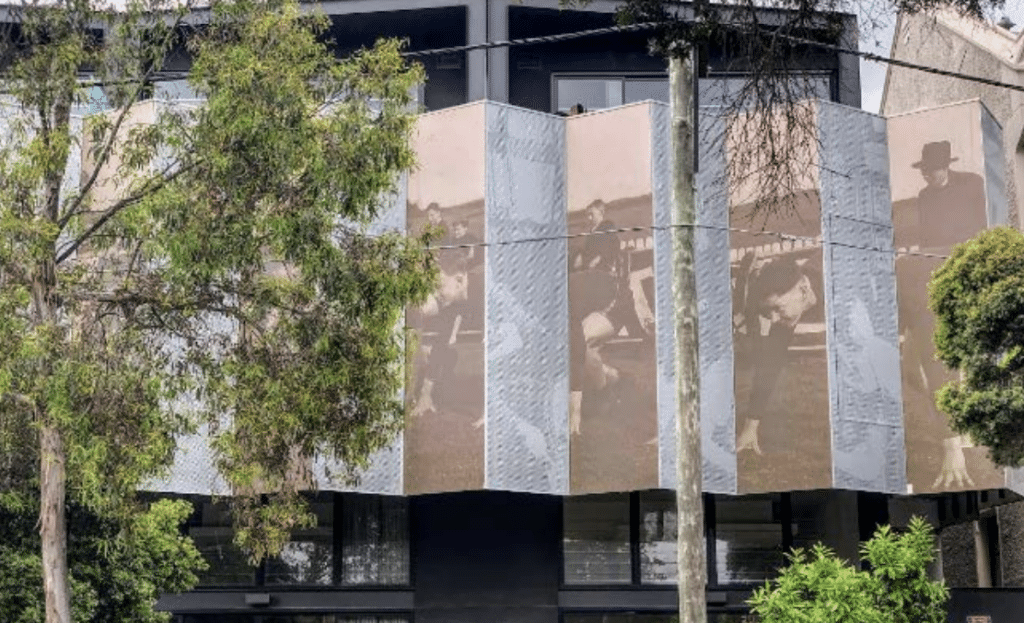
Fig. 3. Perforated screens on a new condominium development in Melbourne’s Richmond harken back to the neighborhood’s factories and mud-coated football grounds. Source: author
Photo-engraved headstones borrow from an existing commemorative vernacular developed to showcase layers of heritage in a rapidly changing built environment. Melbourne has added 1.5 million new residents in the last 20 years, resulting in a radically transformed urban core. As industrial uses have given way to a ‘knowledge economy,’ architects have paid homage to a working class ‘city that was’ with installations, often based on photographs (Figure 3). These include halftone-perforated screens and backlit panels. This precedent for photographic memorialization helped to direct the use of images on headstones but it did not set up the taste cultural guidelines. As a result, cemeteries have had to rely on an ad hoc system, responding to headstone content via ‘customer’ consultation, and, when ‘offensive’ content slips through, via other means.
In many developed countries, the expansion of the middle class in the early 20th century ushered in an era of individual graves. The shared headstone, that left space for the addition of succeeding relatives, was no longer a necessity or a norm. iIndividual headstones still trade of lineage and solemnity, but their form also allows for subtle subversion, quips, score-settling, and dark humor. The epitaph-as-joke genre has a long history that goes back to antiquity, laser engraving has only expanded the possibilities for what can be depicted and the scale it can take. In the case of the Adelaide man ‘flipping’ the bird, many suggested that this image was an “irreverent tribute” to an adventurer and joker taken too young, and the ‘cheeky’ image was a way for his parents to change the narrative of their grief, and his victimhood.
While ‘cheeky’ memorials are mostly tolerated, their proximity to foot traffic and religious groups perceived as ‘sensitive,’ is a concern for cemetery managers. In many cases, the offense comes from the scale of images. These monuments are often facilitated by laser engravers, some of whom are not part of traditional stonemasons’ guilds, testing the content moderation capacity of cemetery managers. This was certainly the case in the controversial placement of two large SpongeBob figures at Spring Grove Cemetery in Cincinnati (Figure 4).
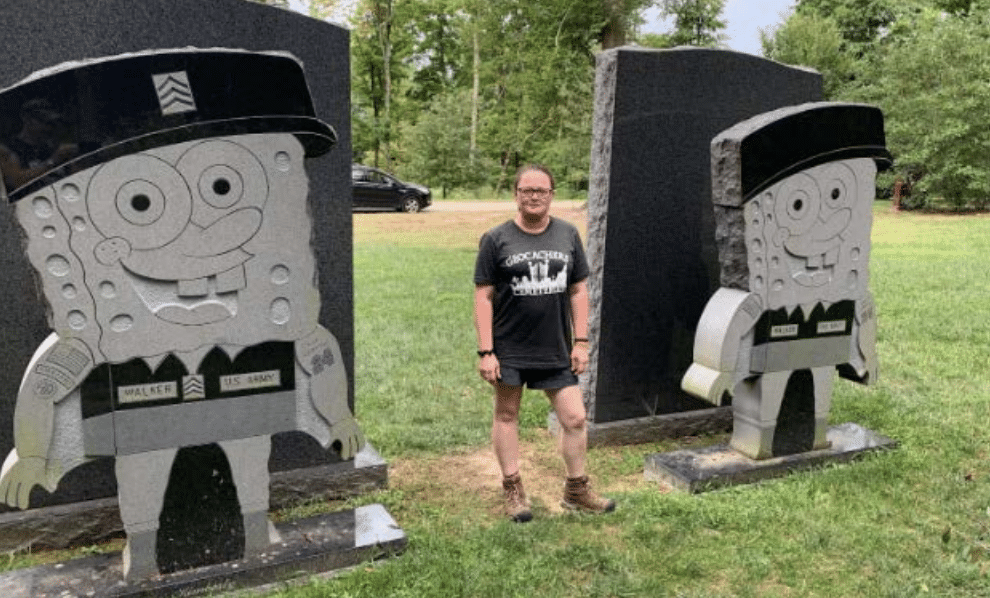
Fig. 4. SpongeBob SquarePants headstones at Spring Grove Cemetery in Ohio. Source: Reddit user
Ohio_Geo (reproduced with permission).
In online forums from the monument business many suggested that acrimonious situations could be better handled with clearer communication between the cemetery administrators and families, and that controversies of imagery were reflective of de-professionalization in the sector, as new monument companies entered the field. Newer businesses, they felt, lacked relationships with cemetery authorities and did not ‘know what questions’ they should be asking. The solution to the problem is often a cordon sanitaire, a stone slab or metal screen, that obscures controversial headstones from paths, restoring some of the cemetery’s uniformity while letting images stay in place.
Conclusions & Outcomes
The shift from letters and line art to dot-based photoengraving has paved the way for new imagery and larger scales of memorialization, testing the boundaries set by authorities. While many of these disputes are the result of misunderstandings or differing tastes, some controversial headstones come out of a desire to shock and amuse, shaking up the somber cemetery and igniting disputes over the nature of memorialization. Navigating the role of photography in memory is challenging, especially as photographs grow more ubiquitous. While those interred in an Australian cemetery a 100 years ago may only have possessed a half-dozen images of themselves, people who pass away today are likely to have tens of thousands of self-portraits.
There is no hard and fast guide to choosing imagery, and there is little scholarship on how the inclusion of photos changes the affective environment of the cemetery. This presentation endeavors to show the state of this new technology in sacred spaces and the way it has been moderated by secular authorities who report to groups from multiple. In many of these cases, disputes are resolved via the placement of a screen or shield that blocks controversial monuments from the eyes of passers-by. ‘Cheeky’ material is available for those seeking it out, while more sensitive constituencies are ‘protected’ by cemetery managers. Good fences, as the saying goes, make for good neighbors. While the cemetery is not quite a neighborhood, the perceived visual intrusion of images into the space of epitaphs may, at least temporarily, be concealed by screens, hedges, and berms.
References
Gergen, Kenneth. 1994. “Mind, text, and society: Self-memory in social context.” In The Remembering Self: Construction and Accuracy in the Self-Narrative, edited by Urlic Neisser and Robyn Fivush, 78-105. Cambridge, U.K.: Cambridge University Press.
Harrington, Stephen. 2021. “Recent shifts in the Australian tabloid landscape: Fissures and new formations.” In Global Tabloid: Culture and Technology, edited by Martin Conboy and Scott A. Eldridge II, 125-136. London: Taylor & Francis.
Jalland, Pat. 2002. AustralianWaysofDeath. Oxford: Oxford University Press.
Madrigal, Alexis. 2011. “Lasers for the Dead: A Story About Gravestone Technology.” The Atlantic, July 29, 2011.
Mills, Cynthia. 2015. Beyond Grief: Sculpture and Wonder in the Gilded Age Cemetery. Washington, D.C.: Smithsonian Institution Scholarly Press.
Thomson, George. 2006. “Tombstone lettering in Scotland and New England: An appreciation of a vernacular culture.” Mortality 11, no. 1: 1-30.
Walsh, William. Handy-book of Literary Curiosities. London: J.B. Lippincott Company, 1892.



